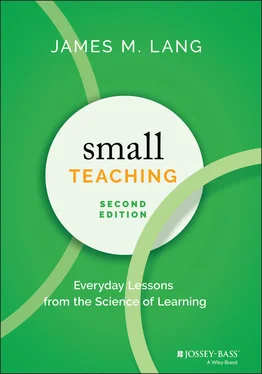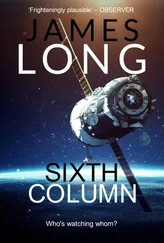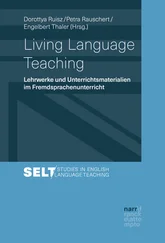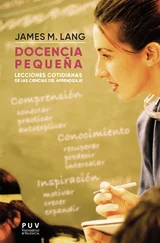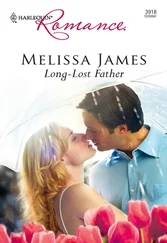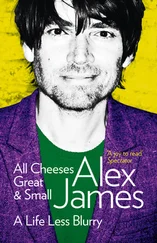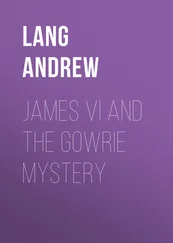But the issue runs more deeply than this. When we learn new facts, we are building up mental structures that enable us to process and organize the next set of new facts more effectively. Knowledge is foundational: we won't have the structures in place to do deep thinking if we haven't spent time mastering a body of knowledge related to that thinking. The depiction of Bloom's taxonomy as a pyramid actually does acknowledge this important principle; one cannot get to the top levels of creative and critical thinking without a broad and solid foundation of knowledge beneath them. As Willingham puts it, “Thinking well requires knowing facts, and that's true not simply because you need something to think about . The very processes that teachers care most about—critical thinking processes such as reasoning and problem-solving—are intimately intertwined with factual knowledge that is stored in long-term memory (not just found in the environment)” (Willingham 2014, p. 28). In his book Curious , Ian Leslie argues that such knowledge is “the hidden power” of our cognition (Leslie 2015, p. 121); the more of it we have, the more deeply we can think.
As a simple illustration of the intertwinement of facts and thinking, consider the example of a lawyer who has to build an argument over the course of a trial, responding on short notice to witnesses or actions by the judge. We might think about a lawyer who works skillfully in such a situation as an adept and creative thinker, one who can respond quickly on her feet and construct arguments with facility. But if we listen to her making those arguments, we are likely to hear lots and lots of facts: legal principles, examples from other famous cases, statements from other witnesses, and so on. Undoubtedly, the lawyer in this case demonstrates complex cognitive and creative skills in building arguments from facts, but no such thinking will arise without those facts. More important, the lawyer's gradual mastery of a body of facts, over the course of years of study and legal practice, enables her to take what she is encountering in this trial and invest it with meaning by connecting it with previous cases and trials, thus better preparing her for her next round of critical thinking in the courtroom. Likewise, I know that if I ask students to think critically about the meaning of a Romantic poem in my literature survey course, the student with a deep factual knowledge of the historical context in which it was written will offer me a better analysis than the one who just eyeballs it and Googles TMa few facts at random. We need factual material in our memory for every cognitive skill we might want to teach our students.
We should not assume that students are either willing or capable of mastering such foundational knowledge on their own, in their study and learning outside of the classroom. In fact, research on student learning strategies suggests that students typically make poor choices when they attempt to learn new information—and that they make those choices even when they know better. Brown, Roediger, and McDaniel, the authors of Make it Stick: The Science of Successful Learning , describe a fascinating experiment in which students were given two different strategies for learning how to identify characteristics of the work of different painters: studying the paintings either in similar groups (i.e., massed studying) or all mixed together (i.e., interleaved studying). The students who studied the paintings in interleaved fashion performed better on tests they took after their study periods—but this did not seem to make a difference in how they thought about studying, as the authors explain: “Despite [the] results, the students who participated in these experiments persisted in preferring massed practice, convinced that it served them better. Even after they took the test and could have realized from their own performance that interleaving was the better strategy for learning, they clung to their belief that the concentrated viewing of paintings by one artist was better” (Brown, Roediger, and McDaniel 2014, p. 54). In other words, these students continued to believe in the superior power of a study strategy that had just been demonstrated to them as less effective than a simple alternative.
Like all of us, these students suffered from biases and misconceptions about learning and how it works. Tell students to study for a test, and most of them will pull out their notebooks or textbooks and read them over and over again, despite scads of research telling us that this is just about the least effective learning strategy for mastering a new body of information. Even if students have encountered this research or have been taught effective study strategies by previous teachers, they still are likely to persist in ineffective learning strategies.
Hence, if we care about students having knowledge that they can use to practice their higher order cognitive skills, we should help them acquire that knowledge. We might rightly not want to spend an extraordinary amount of time and energy on this aspect of their learning, which is what makes it such a perfect realm for small teaching. As you will read in what follows, small teaching activities in the realm of prediction, retrieval, and interleaving can all provide significant boosts to your students’ mastery of foundational knowledge and skills. Such activities, leveraged into the first and final minutes of a class session, can provide a powerful boost to student mastery of knowledge; so, too, can simple tweaks to the organization of your course and the order in which you introduce new material and review older material. Taking advantage of these easy opportunities to help students remember course material will ensure that students can engage more deeply and meaningfully in the complex learning tasks to which you want to devote more of your time and energy—and to which we give more full consideration in Part Two.
Chapter 1 Predicting
INTRODUCTION
My wife, Anne, teaches kindergarten, and during the 2020–2021 school year she taught it remotely from our dining room. Whenever you find it challenging to maintain the focus of your students, you should envision attempting to corral the attention of a couple of dozen five-year-olds through your computer screen and feel just a little bit better about your prospects. I was working from home as well during the pandemic, and so I had the pleasure (I think) of overhearing almost everything she did with her students all day long. I hummed along to the songs she sang about the weather and days of the week, counted my way to one hundred by ones and fives and tens, and listened to her patiently introduce letters and syllables and words to her students.
At some point every day she would read a picture book to the faces gathered on her screen, and this process always started in the same way. She would display the cover of the book, read aloud the title, and then ask her students some variation of the following question: “What do you think this book is going to be about?” She would then pose additional questions based on the specifics of the picture and the title. “What do you think will happen if you give a mouse a cookie?” “What would it be like to take a polar bear for a walk?” A final set of questions was designed to surface whatever students already knew about the subject matter of the book: “Where do polar bears live? Are polar bears pets?” The students would sing out their answers, some of which were on target and some of which were not. (Polar bears do NOT make good pets.) But almost always the process of reading a story aloud to the students began with a few minutes of these efforts by the students to make some predictions about what would unfold in the story they were about to hear.
Читать дальше
